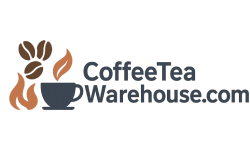
Choosing the right coffee packaging has become a complex balance of preserving freshness, maximizing convenience, and minimizing environmental impact. The evolution of packaging, from traditional bulk bags to innovative single-serve pods, offers a tailored experience for every type of coffee drinker. As consumer preferences shift towards sustainability and convenience, the industry is responding with smarter, greener, and more efficient solutions. Whether you're a connoisseur stocking up on fresh-roasted whole beans or someone who needs a quick, no-mess cup to start the day, understanding your options is key to a better brew.
Whole Bean & Ground Coffee: The Pursuit of Freshness
For many coffee lovers, buying whole or ground beans in bulk is the most popular way to enjoy their daily coffee. This format offers variety and quality, but freshness is paramount.
-
Bags and Valves: The gold standard for preserving freshness is a foil-lined bag equipped with a one-way degassing valve. After roasting, coffee beans release carbon dioxide (CO2). This valve allows the CO2 to escape without letting flavor-destroying oxygen in.
-
Nitrogen Flushing: To further extend shelf life, many roasters use a process called nitrogen flushing. Before sealing the bag, they inject nitrogen gas to displace the oxygen, which is the primary cause of staleness. This method, also known as Modified Atmosphere Packaging (MAP), can keep coffee fresh for months.
-
Sustainable Materials: In response to environmental concerns, there is a growing trend toward sustainable materials. Brands are increasingly using compostable pouches made from plant-based materials like cornstarch (PLA), bags made from post-consumer recycled (PCR) products, and recyclable paper or low-density polyethylene (LDPE) options.
Convenient Pre-Portioned Packs
For those who prioritize ease and consistency, pre-measured coffee packs eliminate the need for grinding or measuring.
-
Pillow Packs: These are individually wrapped foil bags containing pre-ground coffee, perfectly portioned to brew a single pot. Roasters often use nitrogen flushing to preserve the coffee's freshness inside the sealed pack.
-
Filter Packs: Taking convenience a step further, filter packs contain pre-measured ground coffee already sealed inside its own filter paper. This "pouch" can be placed directly into your coffee maker's brew basket, making brewing simple and cleanup effortless.
The Evolving World of Single-Serve Coffee
Single-serve coffee has revolutionized convenience, but it has also faced scrutiny for its environmental impact. The market is now rapidly evolving with more sustainable and diverse options.
-
Coffee Pods (Soft Pods): Often made of biodegradable filter paper, coffee pods are a more eco-friendly single-serve option. These round, flat pouches are not proprietary, meaning pods from various roasters can be used in any compatible pod brewer. However, they are not designed to work in Keurig or Nespresso machines.
-
K-Cup Pods and Their Alternatives: Keurig remains a dominant force in the single-serve market. Initially, their K-Cup patents limited competition. After the patents expired, a flood of third-party "K-Cup alternatives" entered the market.
-
The Keurig 2.0 "DRM" Controversy: Keurig briefly introduced a "Digital Rights Management" (DRM) system in its 2.0 brewers, which used a sensor to reject unofficial pods. This move was met with significant customer backlash, and competitors quickly developed ways to bypass the system. Today, this is largely a non-issue, and most third-party pods are designed to be compatible with all Keurig models.
-
Newer, Greener Options: Innovation in the single-serve space is booming. Consumers can now find compostable and biodegradable pods, as well as reusable K-Cup filters that can be filled with their own ground coffee, reducing both cost and waste. Other emerging formats include single-serve steeped coffee bags and disposable pour-over drip bags, which cater to specialty coffee drinkers who want convenience without sacrificing quality.
Conclusion: Packaging for Your Perfect Cup
There is no single "best" type of coffee packaging; the ideal choice depends on your personal priorities. Whether you value the freshness of a nitrogen-flushed, valve-sealed bag, the simple convenience of a filter pack, or the growing sustainability of modern single-serve pods, there is a solution that fits your lifestyle. By understanding the options available, you can make an informed choice that enhances your daily coffee ritual from the first sip to the last.
Frequently Asked Questions
What is the most eco-friendly coffee packaging?
The most eco-friendly options are packaging formats that reduce waste. This includes compostable bags made from materials like plant-based PLA, recyclable paper or plastic pouches, and reusable containers or single-serve pods.
Which coffee packaging keeps beans the freshest?
Foil-lined bags with a one-way degassing valve are the best for keeping roasted coffee beans fresh. The valve lets CO2 out while preventing oxygen from getting in. For even longer shelf life, look for bags that have been nitrogen flushed to remove oxygen.
What is nitrogen flushing?
Nitrogen flushing is a preservation method where oxygen is removed from a coffee bag and replaced with nitrogen gas just before sealing. Since nitrogen is an inert gas, it doesn't react with the coffee, preventing oxidation and preserving the fresh flavor and aroma for an extended period.
Can I use any coffee pod in a Keurig machine?
While standard soft coffee pods (which resemble tea bags) will not work in a Keurig, the vast majority of hard-sided, K-Cup style pods from various brands are now designed to be compatible with all Keurig brewers, including the 2.0 models.
Is there a difference between pillow packs and filter packs?
Yes. A pillow pack is a sealed foil bag containing ground coffee that you must pour into a separate coffee filter. A filter pack contains the ground coffee already sealed inside its own filter paper, so you can place the entire pack directly into your coffee maker.
Are K-Cups recyclable?
It depends on the specific K-Cup and your local recycling facilities. Many brands are now making K-Cups from recyclable plastic (typically #5 plastic). However, you usually need to separate the foil lid and the coffee grounds from the plastic cup before recycling, which can be inconvenience.

